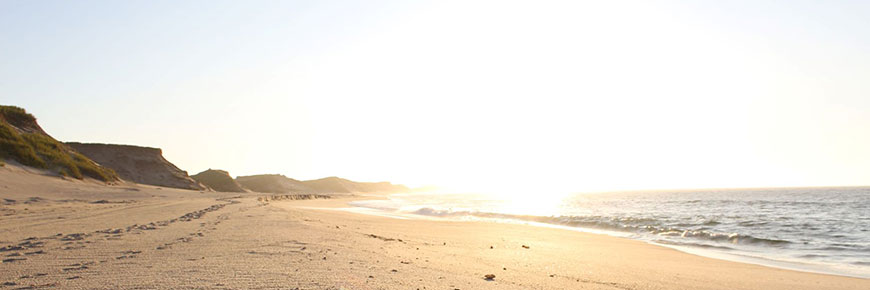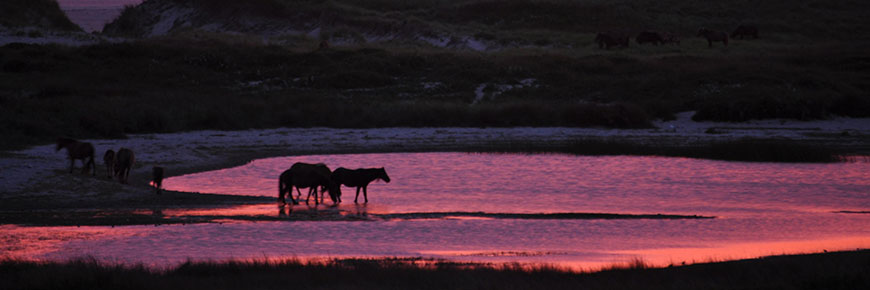
Environment
Sable Island National Park Reserve
Perched on the edge of the Continental Shelf clings a crescent shaped isle alone in the North Atlantic. This is Sable Island, Nova Scotia; a vegetated sand bar approximately 290 km from Halifax, at 44˚N 60˚W. Roughly 42 km in length, and no more than 1.3 km at its widest, it spans a total area of 3,400 ha, approximately seven times the size of McNabs Island in the Halifax Harbour.
Beaches, dunes, and sand spits

The island is flanked on the north and south by two long parallel beaches separated by a mature dune system. The interior topography is characterized by low rolling dunes with a number of freshwater ponds, especially in the west. Both the eastern and western tips are 2-6 km long flat expanses of sand known as the East and West Spits. In the centre of the island, and running for approximately two thirds of the total length of the island, is a series of high dunes which is one of Eastern Canada's largest dune systems.
Freshwater lens

A freshwater lens, maintained by precipitation, underlies Sable Island and surface exposures of this lens form the island’s freshwater ponds. The freshwater lens floats on top of the salt water due to the difference in specific gravity. The ponds provide habitat for unique plant and animal communities and fresh water for the island’s inhabitants. Potential saltwater contamination of the ponds is considered a major threat, particularly if dunes erode or if the rate of consumption becomes greater than the ponds’ capacity to recharge.
Climate

The climate of Sable Island is temperate; however, during winter months, the moderating influence of the Gulf Stream results in some of the warmest temperatures in Canada. Given its remote position in the Northwest Atlantic, the island is often exposed to very strong winds. There are frequent heavy fogs in the area: on average there are 127 days out of the year that have at least one hour of fog.
Related links
- Date modified :